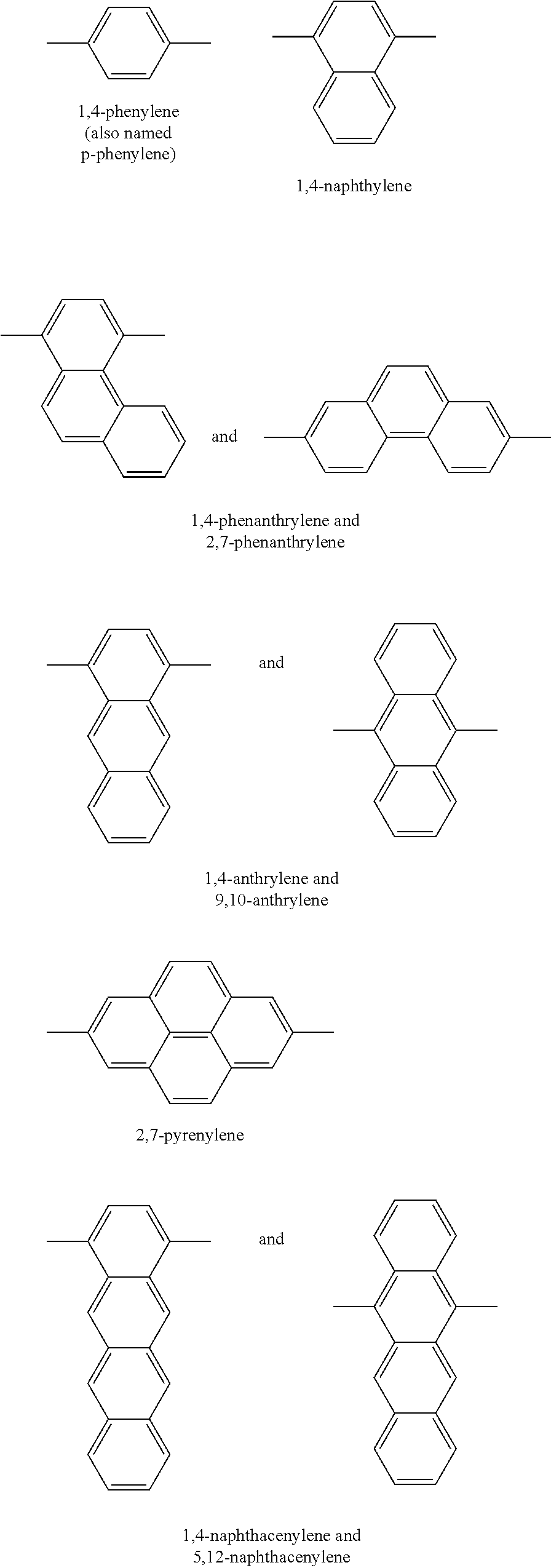Polyarylene foam materials
a polyarylene and foaming technology, applied in the field of polymer foams, can solve the problems of limited miscibility between the two polymers, immiscible blends exhibit difficulties in foaming processes, rigid-rod polyphenylene copolymer/ppsu polymer blends suffer from this limited miscibility, etc., and achieves superior mechanical properties, fine and homogeneous cell structure, and good mechanical properties.
- Summary
- Abstract
- Description
- Claims
- Application Information
AI Technical Summary
Benefits of technology
Problems solved by technology
Method used
Image
Examples
examples
[0185]The invention will now be described in more details with reference to the following examples, whose purpose is merely illustrative and not intended to limit the scope of the invention.
Raw Materials
[0186]Titanium Dioxide: —Tipure® R-105 titanium dioxide, a rutile TiO2 manufactured by the chloride process, treated with silica and alumina.
RADEL® R PPSU from Solvay Specialty Polymers USA, L.L.C.
Primospire® PR-250 polyphenylene polymer from Solvay Specialty Polymers USA, L.L.C.
®Irganox 1010 from BASF Corp.
Mistron® Vapor talc from Lintech International
General Procedure for the Preparation of the Foam Material (P)
[0187]A polymer or polymer mixture was compounded with Tipure® R-105 TiO2 or Mistron® Vapor talc and optionally ° Irganox 1010. Compounding into pellets was performed on a Berstorff 25 mm twin screw extruder having an L / D ratio of 40:1 and eight barrel sections, of which sections 2-8 are equipped with heating and cooling. The physical mixture was then gravimetrically fed int...
examples c7 , 8-10
Examples C7, 8-10 and C11
[0198]The foamed material of examples C7, 8-10 and C11 were prepared according to the general procedure as described above. First the foaming compound was prepared by feeding the physical mixture of the polymers, Mistron® Vapor talc (amount see in Table 2 below) and ° Irganox 1010 (0.125 wt. % relative to total weight of composition (C)) gravimetrically into the first barrel section of a 25 mm Berstorff co-rotating intermeshing twin-screw extruder at a rate of 25 lb / hr (11.4 kg / hr). Barrel temperature settings for barrel sections 2 through 8 were set at 300° C. and no heat was applied to barrel section 1 where the extruder feed throat is located. The die temperature setting was 340° C. The extruder screw speed used was 200 RPM. The foaming process used was the same one described above under the heading “General procedure for the preparation of the foam material (P)”. In the foaming process, ethanol was used as blowing agent and its concentration was set at t...
PUM
| Property | Measurement | Unit |
|---|---|---|
| Tg | aaaaa | aaaaa |
| density | aaaaa | aaaaa |
| wt. % | aaaaa | aaaaa |
Abstract
Description
Claims
Application Information
 Login to View More
Login to View More - R&D
- Intellectual Property
- Life Sciences
- Materials
- Tech Scout
- Unparalleled Data Quality
- Higher Quality Content
- 60% Fewer Hallucinations
Browse by: Latest US Patents, China's latest patents, Technical Efficacy Thesaurus, Application Domain, Technology Topic, Popular Technical Reports.
© 2025 PatSnap. All rights reserved.Legal|Privacy policy|Modern Slavery Act Transparency Statement|Sitemap|About US| Contact US: help@patsnap.com



